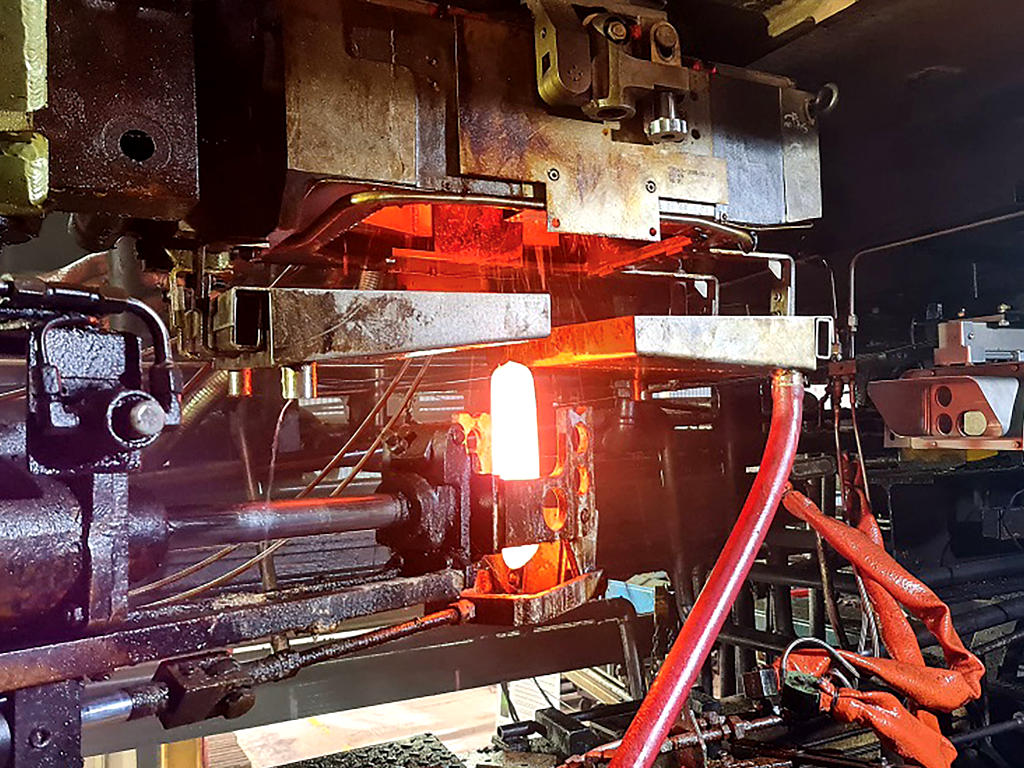To ensure efficient production, consistent product quality, and environmental responsibility in the glass packaging industry, it is essential to focus on various aspects of the manufacturing process. Given that 80% of defects originate from gobs, according to glass manufacturers, monitoring them is a key step in improving process control. This level of diligent surveillance also plays a central role in optimising glassmaking operations, reducing waste and maintaining brands’ high standards.
The Tiama HOT mass 2 is the latest generation of Tiama’s hot end product range dedicated to gob monitoring. The inspection and quality control specialist’s new sensor was launched at glasstec 2022 to replace the original Tiama HOT mass and GIA [Gob Image Analyser] system.
Enhanced glass forming
Maintaining a stable gob shape ensures a smoother and more predictable manufacturing process, and is critical to ensure consistent product quality, as the slightest variations in shape can lead to defects in containers.
The Tiama HOT mass 2 provides real-time, 3D views of gobs and over 20 accurate measurements, such as gob weight, shape information (lengths; diameters), velocities... The system also provides precise information for temperatures, falling angles and velocities.
Since fluctuations in any of these parameters can affect the stability of the forming process, efficient gob monitoring helps to maintain a consistent supply of gobs to the IS machines, maximising production output and minimising downtime.
Gob weight control
The Tiama HOT mass 2 keeps gob weight stable via two closed loops with the IS machine, automatically regulating tube height and needles’ positions. (Gob weight is adjusted by the system, which sends pulses to the motors of the tube and the needles to keep the gob weight stable within the tolerances set by manufacturers.)
Performances achieved by the system are reportedly “very promising”. As an example, for a production run with a weight setpoint of 955g, the Tiama HOT mass 2 regulates the gob weight within
+/-1g. Thus, weight limits can be set to a minimum and the weight setpoint reduced. A reduction of only 1g means significant savings for a glass factory. Automatic gob weight control ensures that the containers always meet the quality requirements in terms of weight and capacity.
Additionally, as limiting carbon impact [CO2 footprint] is becoming a priority for factories, better weight stabilisation helps to support glass plants in the production of lighter containers [thereby lowering manufacture-generated CO2 emissions].
Weight stabilisation also reduces the creation of certain types of defects, such as overpress or unfilled finish, while improving the glass distribution. Automatic weight control is a major feature of the Tiama HOT mass 2, giving glassmakers better control of blow-blow and press-blow processes.
Automation advantages
The gob weight control automation facility frees up time for operators to concentrate on added-value tasks around the IS machine. Plus, it reduces the need for frequent manual adjustments in the forming process to keep the gob weight stable.
The Tiama HOT mass 2 is a universal system that can be connected to any kind of IS machine and process. The technology used by the sensor makes it possible to have a compact solution that can be easily installed and requires very little maintenance.
Enhanced connectivity
By collecting and analysing data related to gobs, manufacturers can identify patterns, trends and areas for improvement in the production process. Fully integrated in the YOUniverse concept [Tiama’s ‘intelligent solution’ for an interconnected smart factory which uses an open information interchange to allow machines from any manufacturer to be linked to the YOUniverse and to ‘speak to each other’], the Tiama HOT mass 2 is compatible with other data solutions offered by Tiama and the information systems typically used by glass plants.
To go further in understanding the glass process, the Tiama HOT mass 2 can be connected to the company’s big data tool: Tiama DataMine, designed to monitor and improve the glassmaking process by collecting and analysing every single piece of data available in the plant. The sensor is also compatible with the Tiama ECO-system solution, which allows users to gather all the data and images coming from every Tiama machine installed in the glass plant, from the hot end to the cold end.
Investment for the future
Ultimately, by ensuring gobs are consistent in weight, shape and temperature, glass manufacturers can produce uniform products while reducing waste and energy consumption. This not only benefits the company’s bottom line, but also demonstrates a commitment to quality, safety and environmental sustainability. Gob monitoring is an investment for the future, ensuring that the glass industry continues to thrive while minimising its impact on the planet.
Many years of experience and installations of gob monitoring sensors around the world have combined to make the Tiama HOT mass 2 an efficient and ergonomic system for meeting customers’ needs. And thanks to the global presence of its after-sales engineers, Tiama is ready to support customers to get started with the new sensor.
Image: Gob monitoring systems have become essential for glass plants.


